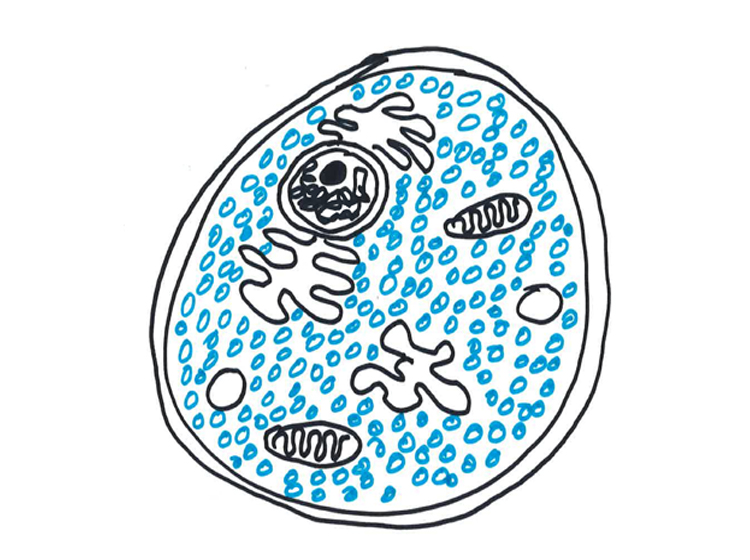
ATP is one of the most important and famous molecules in the cell, serving as an energy source for carrying out tasks vital to life. But it turns out that there is a much higher concentration of ATP in cells than is needed for energy. Making ATP is costly, so why would cells make so much more than appears to be necessary?
Researchers from the Hyman and Alberti labs at the MPI-CBG, in collaboration with Dr. Yamuna Krishnan at the University of Chicago, may have solved this mystery by discovering a second role for ATP, which can only be performed at high concentrations: ATP can function as a biological hydrotrope, keeping proteins soluble. Hydrotropes are amphiphilic small molecules that can help hydrophobic molecules dissolve and stay soluble in water. The inside of a cell is an extremely crowded place, packed densely with proteins, and by acting as a hydrotrope, ATP may keep proteins from sticking together, or aggregating. Since the levels of ATP in cells decline with age, this work also has interesting implications for aggregation associated with age-related neurodegenerative diseases.
To learn more, watch a video created by co-first authors Avinash Patel and Liliana Malinovksa, explaining their research.
Avinash Patel, Liliana Malinovska, Shambaditya Saha, Jie Wang, Simon Alberti, Yamuna Krishnan, Anthony A. Hyman:
ATP as a biological hydrotrope
Science, 19 May 2017